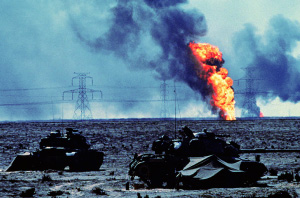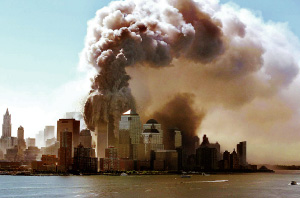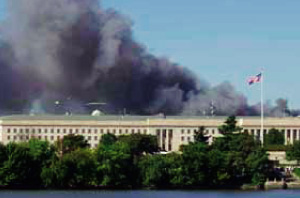1. The Rise of "Al-Qaeda"
When the former Soviet Union launched a military intervention against Afghanistan in December 1979, Muslims
gathered from many Arab countries like Egypt and Saudi Arabia as volunteer soldiers to fight against the
former Soviet Union. Among these soldiers was Usama bin Ladin, who is on the international wanted list as
the mastermind behind the simultaneous terrorist attacks on the United States (hereinafter referred to as the
terrorist attacks on the United States) which occurred in September 2001.
When the former Soviet Union army withdrew from Afghanistan in 1989, most Islamic volunteer soldiers returned to their home countries. However, they were not necessarily welcomed back, and many were disillusioned to find that their home countries had become flooded with western influence. They saw such westernization as a sign of "moral decline," a fact which is commonly viewed as the cause of their adopting extremist tendencies.
It is said that Usama bin Ladin formed "Al-Qaeda," by bringing these returned soldiers together against this backdrop.
In August 1990 Iraq invaded Kuwait, triggering the Gulf War. US military forces began stationing themselves in Saudi Arabia, which contains Islamic holy sites. This is said to be the reason that Usama bin Ladin began setting out to bring down the United States for setting foot on holy land, and the Saudi royal family which had allowed this to happen.
In February 1998 Usama bin Ladin linked up with the "Gama'a al-Islamiyya" and "Al-Jihad" of Egypt, "Harkat ul- Mujahidin" of Pakistan, "Harkat-ul-Jihad" of Bangladesh, and various other Islamic extremist groups to form "International Islamic Front for Jihad against the Jews and the Crusaders." He also issued a religious edict, or "fatwah," ordering that all Americans and their allies be killed, regardless of place or their status as private civilians or soldiers, until US forces leave the Islamic land.
Because this religious edict made terrorism against US interests a religious obligation, it is seen in effect as a declaration of war against the United States.
 |
| The Gulf War (January 1991) (Photo: Jiji Press) |
In August 1998 bombs exploded in front of the US Embassies in Kenya and Tanzania, killing a combined total of approximately 300 people and injuring over 5,000.
The US government concluded that Usama bin Ladin was involved in these incidents and launched missile attacks on facilities in Afghanistan and Sudan that were believed to be connected to him. Because Kenya and Tanzania had previously been considered to have little threat of terrorism these incidents showed once again the danger posed by the global network of Islamic extremists.
"Al-Qaeda" continued to expand its influence in not only its main activity bases like Afghanistan, but also in the former republics of the Soviet Union, Central Asia, and Southeast Asia, committing a series of terrorists acts, even killing private civilians. In October 2000, it was suspected of being responsible for driving a bomb-laden boat into the US Navy destroyer "Cole" which was anchored at Aden harbor in Yemen, killing 17 US crew members and injuring 37 others.
In September 2001, the terrorist attacks on the United States took place. Employing an unprecedented method of simultaneously hijacking four passenger aircrafts laden with airline crew and passengers and plunging them into the targets, they were able to kill approximately 3,000 people. This was the largest number of casualties in history resulting from a terrorist attack, a fact which sent shockwaves throughout the world.
In the same month, the director of the Federal Bureau of Investigation (FBI) announced that Usama bin Ladin was involved in this incident. In October 2001 the United States launched a militar y attack on the Tal iban r egime, which was i n vir tual control of Afghanistan, for placing Usama bin Ladin under its protection. In December of the same year, the Taliban surrendered, the last stronghold of Kandahar, and President George W. Bush of the United States declared victory in the fight against the Taliban.
 |
| The World Trade Center and other high-rise buildings in Manhattan consumed by flame (September 2001) (Photo: Jiji Press) |
 |
| Black smoke rising from the Pentagon (September 2001) (Photo: Jiji Press) |